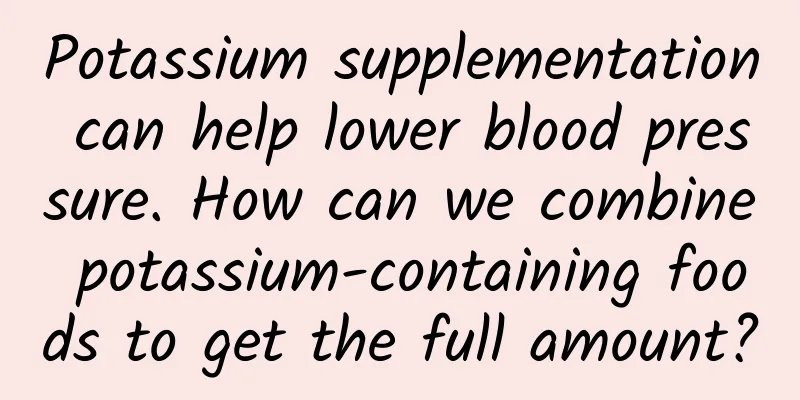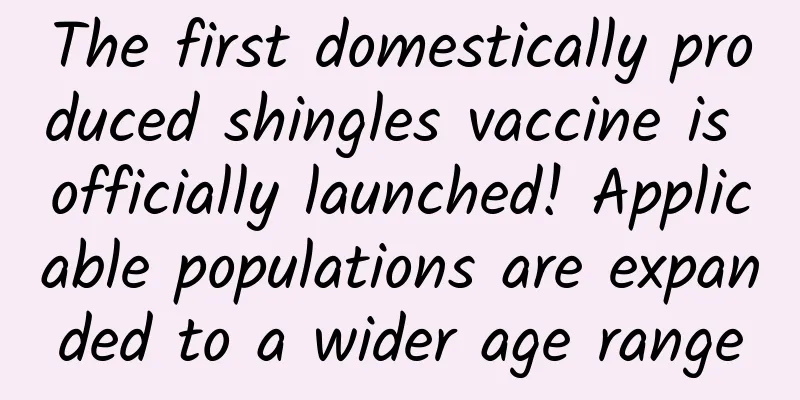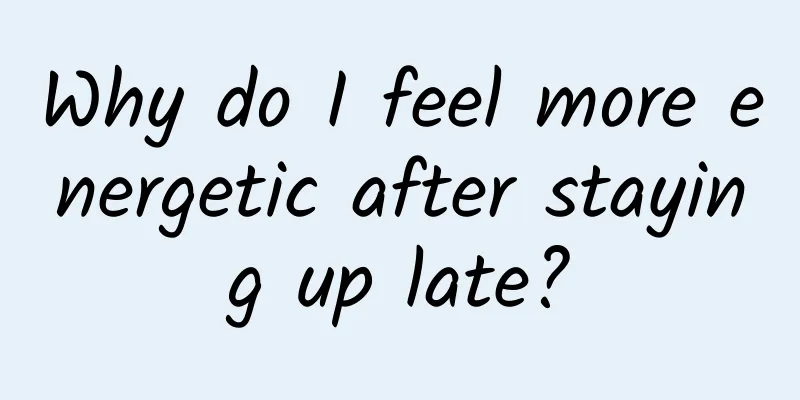Potassium supplementation can help lower blood pressure. How can we combine potassium-containing foods to get the full amount?

|
A friend told Huazi that he saw some information online saying that eating more potassium-containing foods can lower blood pressure. Is that true? Huazi told him that it is true. Sodium ions in table salt are the main factor inducing high blood pressure and will cause high blood pressure. Potassium ions can counteract the blood pressure-raising effect of sodium ions, so potassium supplementation can help lower blood pressure. However, potassium ions need to be supplemented in sufficient amounts to have a better blood pressure lowering effect. Some studies have shown that 3500~4700 mg of potassium should be supplemented every day to have a significant blood pressure lowering effect. It is not easy to get this amount. 1. Eat 1.5 catties of vegetables every day. People with high blood pressure are advised to eat more vegetables. Vegetables are not only rich in potassium, but also contain calcium, magnesium, vitamins and other trace elements needed by the human body. It should be noted that vegetables also need to be matched. Green leafy vegetables contain more dietary fiber, which is easier to produce a sense of fullness and easy to eat too much. So when choosing vegetables, you can choose half a pound of green leafy vegetables and one pound of tomatoes, winter melons, eggplants, potatoes and other vegetables. But be careful not to add too much salt, soy sauce and other seasonings when cooking, and the taste should be lighter. Otherwise, excessive intake of sodium salt will offset the blood pressure lowering effect of potassium ions. 2. Eat 0.5-1 catties of fruit every day. Fruits are also rich in potassium, but it should be noted that fruits also contain fructose, fat and other calories. If you eat too much, it is easy to cause weight gain. Therefore, you should eat less fruits with high calories to avoid excessive intake of calories, which will affect your health. Bananas are a fruit that is familiar to everyone. They are high in potassium, but they are also high in calories. Don't eat too much. About half a pound a day is enough. Oranges have slightly lower calories, and watermelons and cantaloupes have even lower calories. At the same weight, you can eat more low-calorie fruits. It's okay to eat 1 pound a day. 3. Replace staple food with whole grains. The potassium contained in whole grains such as beans, millet, and oats is several times that of refined rice and refined flour. When cooking staple food, you can replace half of the refined rice and refined flour with whole grains and beans. Under the condition of keeping the total calorie intake unchanged, you can significantly increase the intake of potassium ions. It is a better choice to replace staple food with potato, sweet potato, yam, taro and other potato foods. Potato foods have the highest potassium ion content in daily food. For example, the potassium content of potatoes is 26 times higher than that of refined rice. If half of the rice for three meals a day is replaced by potatoes, you can basically get 50% of the total potassium ion required every day. 4. You can choose low-sodium salt when cooking. Normal table salt is sodium chloride, and potassium chloride and magnesium chloride replace part of the sodium chloride in low-sodium salt. Choosing low-sodium salt in daily cooking can not only reduce the intake of sodium ions, but also increase the supplement of potassium ions. Generally speaking, low-sodium salt contains 25% potassium chloride and 10% magnesium chloride, and the sodium chloride content is only 65%, but the saltiness of the taste can still be maintained at about 80%. If the daily salt intake of hypertensive patients is limited to 6 grams, when using low-sodium salt, the actual amount of sodium salt intake is less than 4 grams, which is very suitable for people with hypertension. 5. Pay attention to balanced nutrition intake. While eating vegetables, fruits, and whole grains, you should also eat 100-200 grams of lean meat, milk, eggs, fish and other animal protein foods every day. Because animal cells also contain a lot of potassium, animal protein provides the human body with not only high-quality protein, but also potassium, iron, calcium, zinc, magnesium and other trace elements. A vegan diet is not recommended for people with high blood pressure. In addition to ensuring protein intake, 25 grams of fat should be consumed every day to obtain fat-soluble vitamins. A vegan diet will lead to nutritional imbalance, affect nutrient metabolism, and be more prone to metabolic disorders. In summary, eating more potassium-containing foods can help lower blood pressure. But you need to pay attention to your diet and ensure balanced nutrition. For people with normal kidney function, oral potassium supplementation is safe. It should be noted that people with renal insufficiency will affect potassium ion regulation and are prone to hyperkalemia, so they should not take too much potassium supplementation. I am pharmacist Huazi, welcome to follow me and share more health knowledge. |
<<: Children's articulation training series popular science - Don't say "肚" as "顾子"
>>: Is ovulation bleeding serious?
Recommend
Irregular menstrual periods
During menstruation, girls will have similar symp...
What causes dark menstrual period? Authoritative experts tell you
Under normal circumstances, the color of menstrua...
6,000 worms in one snail! What kind of snail can eat so much?
Audit expert: Li Weiyang Well-known science write...
Jiao Yang: New regulations issued to strengthen import and export food safety
Jiao Yang, Professor-level Senior Engineer Vice C...
How to prevent uterine adhesions again
Intrauterine adhesion is a common gynecological d...
Why do both Zhong Nanshan and Zhang Wenhong recommend drinking milk?
As the Spring Festival approaches, the epidemic h...
What are the benefits of ovarian massage?
We now pay special attention to maintenance, espe...
Why does tuberculosis always "favor" students?
World Tuberculosis Day (March 24) is coming Cough...
Is dried okra nutritious? How to eat dried okra best?
Modern research has found that okra has high nutr...
The first choice of antipyretic medicine for pregnant women
During pregnancy, pregnant mothers need to provid...
Breast pain
Many female friends have been troubled by breast ...
What are the methods for treating fallopian tube adhesions?
The treatment of fallopian tube adhesion is very ...
Does a thick placenta have any effect on the fetus?
The normal condition of the placenta also has a r...
Can I use lubricants when preparing for pregnancy?
When men and women have normal sexual intercourse...









